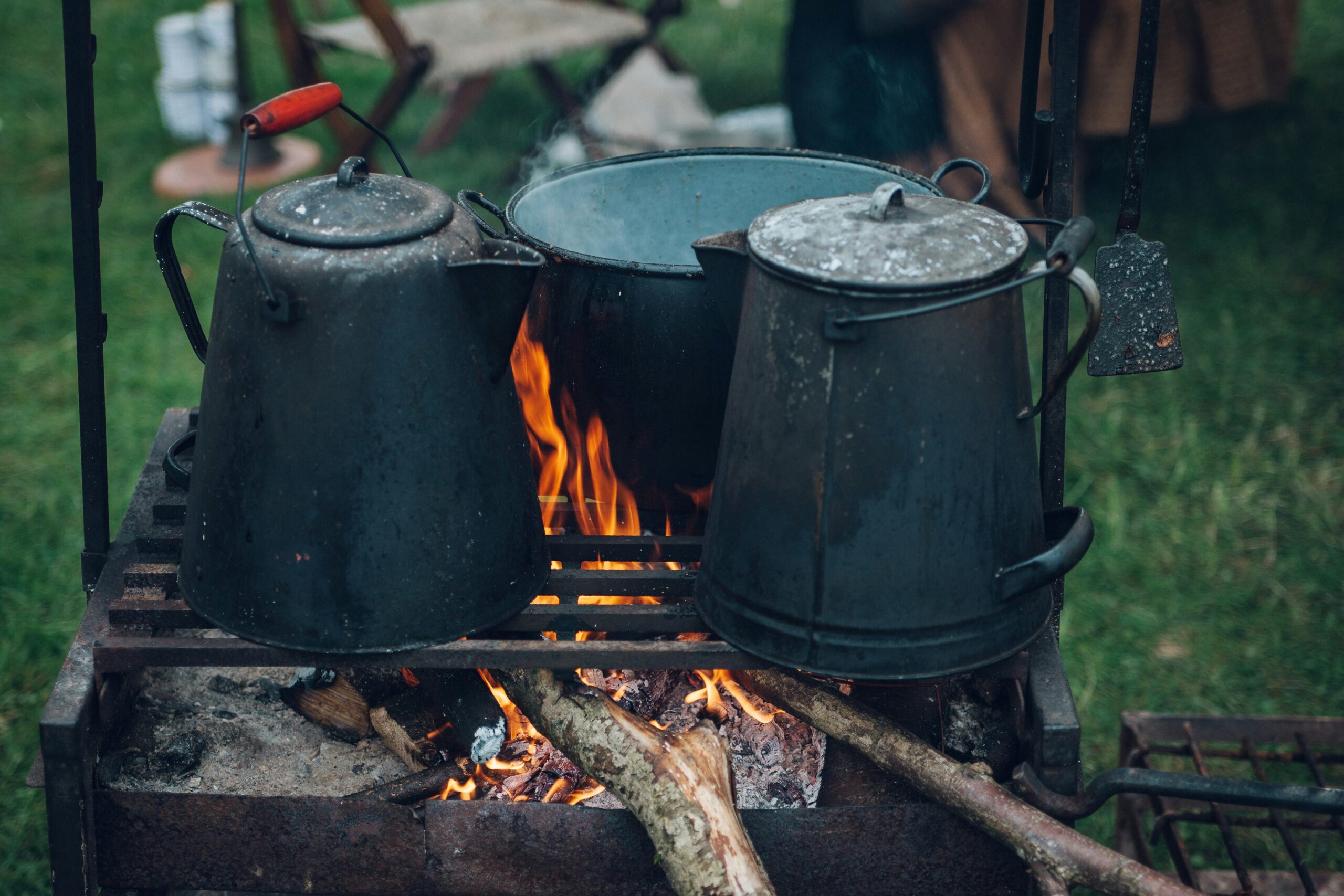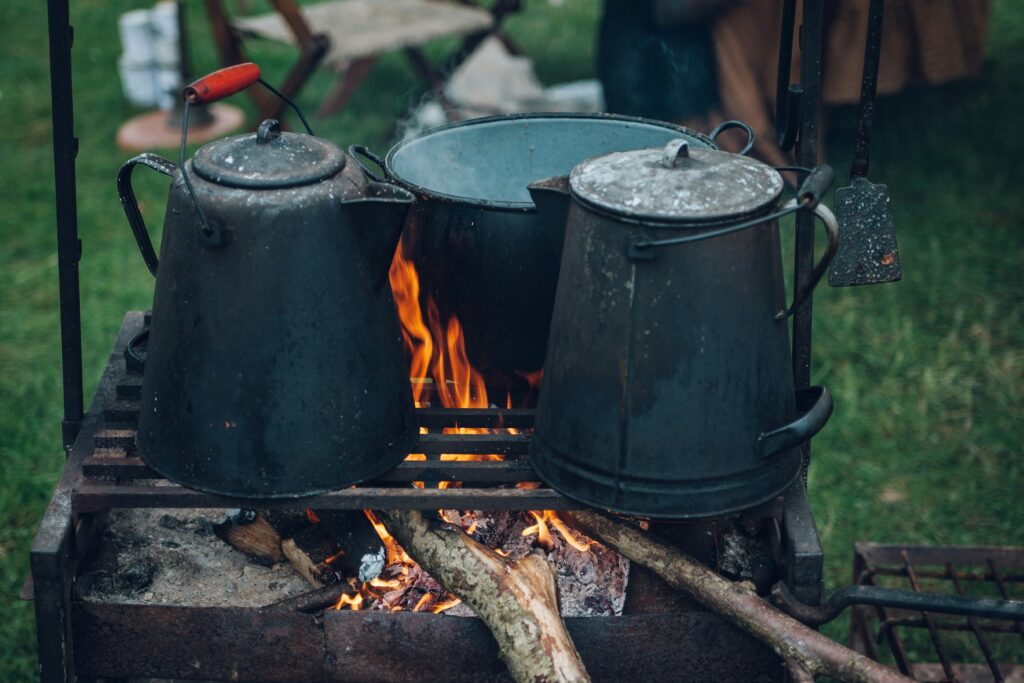
Introduction to Outdoor Camping Stoves
Outdoor camping stoves serve as an essential piece of equipment for campers and outdoor enthusiasts, significantly enhancing their overall experience in nature. These stoves are designed to facilitate cooking and boiling water while exposed to outdoor elements, ensuring that individuals can prepare warm meals and have access to hot beverages even in remote locations. Understanding the various types of camping stoves and their functionalities is crucial for anyone looking to embark on a camping adventure.
There are multiple types of outdoor camping stoves available on the market, each tailored to meet specific needs and preferences. These stoves can range from portable propane options to lightweight alcohol stoves, each presenting unique advantages and disadvantages. Propane stoves are known for their efficient heating and quick cooking times, making them a popular choice among campers. Conversely, wood-burning stoves are favored by those seeking a more sustainable method of cooking, utilizing natural resources readily available in the environment.
Selecting the appropriate camping stove largely depends on the intended camping experience, as well as the camper’s individual preferences and cooking styles. For instance, a family camping trip may necessitate a larger, more robust stove capable of handling multiple pots and pans at once, whereas solo backpackers may benefit from more compact and lightweight options. Furthermore, factors such as fuel type, cooking capacity, and ease of setup play vital roles in the decision-making process.
In summary, outdoor camping stoves are indispensable tools for anyone venturing into the great outdoors. By understanding the variety of available stoves, campers can make informed choices that enhance their camping experience, ensuring that they can enjoy delicious, hot meals no matter where they may be situated. Thus, the right stove can significantly impact both the practicality and enjoyment of outdoor cooking adventures.
Canister Stoves
Canister stoves have gained recognition among outdoor enthusiasts, particularly backpackers, due to their lightweight and compact design. These stoves operate using pressurized canisters filled with fuel, which enables a straightforward setup and easy operation. The design ensures that users can quickly connect the stove to the canister, ignite it, and start cooking almost immediately. This convenience is one of the primary reasons backpackers favor canister stoves on their adventures.
One notable advantage of canister stoves is their efficient fuel consumption. Because they use highly pressurized fuel, they produce a consistent flame that can be adjusted easily, allowing for precise temperature control while cooking. This adaptability is particularly valuable in varying weather conditions, where wind or rain could impact the stability and efficiency of the cooking process. Additionally, the compact nature of the canister system facilitates easy transportation, making it a compelling choice for those looking to minimize their pack weight.
However, canister stoves also present some disadvantages, primarily concerning fuel availability and environmental considerations. The fuel canisters are not as universally accessible as other fuel types, such as wood or alcohol, especially in remote areas. This limitation can complicate long trips or hikes, where resupply options are scarce. Furthermore, the disposal of empty fuel canisters poses an environmental challenge. Many outdoor enthusiasts are increasingly conscious of their ecological footprint, and the single-use nature of these canisters can lead to increased waste. Proper recycling or disposal methods need to be considered when using canister stoves.
Overall, while canister stoves offer numerous benefits to users, including ease of use and portability, it’s essential to weigh these advantages against their potential downsides, particularly regarding the sustainability of fuel sources and waste management.
Liquid Fuel Stoves
Liquid fuel stoves represent a robust alternative in the realm of outdoor camping stoves, employing a variety of liquid fuels such as white gas and kerosene to generate heat. One of the most significant advantages of these stoves is their versatility; they can typically burn various types of liquid fuels, making them suitable for different environments and availability of fuel sources. This capability allows campers to choose the most accessible fuel while on their adventures, which can be particularly advantageous in remote locations. Furthermore, refilling and maintaining fuel supplies can be more straightforward than managing propane canisters, particularly for extended excursions where fuel consumption is a concern.
In addition to their versatility, liquid fuel stoves provide an efficient burn, producing a high heat output suitable for boiling water and cooking meals relatively quickly. This efficiency often makes them a preferred choice among seasoned campers who prioritize cooking performance. Their ability to function well in cold temperatures is another benefit, as liquid fuels do not suffer as much performance degradation as some canister fuel systems in frigid conditions.
Wood Burning Stoves
Wood burning stoves represent a sustainable option for outdoor cooking, utilizing natural biomass as fuel. These stoves are particularly attractive due to their minimal environmental impact, as they do not require the use of fuel canisters, which often contribute to plastic waste and carbon emissions during production and disposal. By harnessing locally sourced wood, campers can significantly reduce their carbon footprint while enjoying the outdoor experience.
One of the most notable advantages of using wood burning stoves is the abundance and accessibility of firewood in many camping areas. This allows campers to be more self-reliant, as they can gather fallen branches and small logs instead of relying on pre-packaged fuels. Furthermore, cooking over an open flame can enhance the flavor of meals, providing a unique barbecue experience that is difficult to replicate with other cooking methods. The warmth emanating from wood burning stoves can also serve as a comforting ambiance, adding to the outdoor camping atmosphere.
However, there are challenges associated with wood burning stoves that campers need to consider. Locating suitable wood can be a task, particularly in areas where fallen branches are scarce. Additionally, the quality and type of wood can drastically affect the stove’s efficiency and the cooking experience. Furthermore, smoke production is another significant concern, as it can be problematic in certain locations or during periods of high fire danger. Managing the smoke output and ensuring proper ventilation are essential to ensure a pleasant cooking environment.
In summary, while wood burning stoves offer numerous advantages for eco-conscious campers looking to minimize their environmental impact, the inherent challenges of finding suitable wood and managing smoke production should be carefully weighed before opting for this cooking method during camping trips.
Propane Stoves
Propane stoves are a popular choice among campers due to their convenience and quick heating capabilities. These stoves utilize propane gas as fuel, which is readily available in many camping areas, making them accessible for outdoor enthusiasts. One of the main advantages of using propane is the stability of the fuel; propane burns consistently and efficiently, allowing for reliable cooking performance in various weather conditions. This makes it particularly advantageous for those who require a dependable heat source during lengthy camping trips.
Another benefit of propane stoves is their ability to reach high temperatures quickly. Unlike some alternative cooking methods that may take longer to heat up, propane stoves allow campers to boil water or cook meals in a fraction of the time. This efficiency can be a significant advantage when time is of the essence, such as during group camping trips where multiple meals need to be prepared simultaneously.
In conclusion, propane stoves offer numerous advantages for camping, particularly concerning their efficiency, speed, and availability. However, potential drawbacks, including weight and the logistics of transporting fuel, must be taken into account to determine whether they are the right choice for a particular camping experience.
Electric Camping Stoves
Electric camping stoves have gained popularity among outdoor enthusiasts, especially in locations where an electric supply is readily available. These stoves offer several advantages that facilitate the cooking process while camping. One of the most notable benefits is the ease of temperature control; users can typically set their desired heat level with precision, allowing for more consistent meal preparation. This capability significantly reduces the risk of burning food compared to traditional gas stoves. Furthermore, electric camping stoves generally provide uniform heat distribution, ensuring that meals are cooked evenly. This feature is particularly beneficial for preparing dishes that require careful temperature management.
Another advantage of electric camping stoves is their convenience regarding setup and clean-up. Most models are user-friendly and require minimal effort to assemble, making them suitable for both experienced campers and novices. Additionally, these stoves often come equipped with non-stick surfaces, which simplifies cleaning after a meal. The overall efficiency and cleanliness associated with electric camping stoves enhance the cooking experience, allowing campers to enjoy their culinary endeavors without the hassle of dealing with fuel and extensive cleaning processes.
However, it is essential to consider the disadvantages of using electric camping stoves. The primary drawback is their dependence on an electric supply, which limits their usability in remote locations that lack access to power. Campers planning excursions in secluded areas may find that electric stoves are not practical options. Furthermore, using an electric stove may restrict cooking to established campgrounds, as setting up outside of these areas may pose challenges. In addition to the dependency on electricity, the equipment can be bulkier than traditional stoves, posing further constraints for campers seeking to minimize gear weight while on the move.
Comparison of Stove Types
When selecting an outdoor camping stove, it is crucial to understand the various types available, as each offers distinct advantages and disadvantages based on weight, fuel sources, cooking efficiency, and suitability for diverse camping scenarios. The major categories of camping stoves include liquid fuel stoves, canister stoves, wood-burning stoves, and electric stoves.
Liquid fuel stoves, often favored for their versatility, utilize fuels such as white gas or kerosene. They typically weigh between 2 to 4 pounds, making them comparatively lightweight for backpackers. Their efficiency in colder conditions and at high altitudes sets them apart. However, they require maintenance and are not as user-friendly as other stove types, which may deter novice campers.
Canister stoves are popular for their convenience and ease of use. They work with pre-packaged gas canisters and are among the lightest options available, typically weighing around 1 to 2 pounds. They ignite quickly and allow for precise temperature control, ideal for cooking meals efficiently. These stoves, however, may not perform well in extremely cold temperatures and require access to specific fuel canisters, which may limit availability in some regions.
Wood-burning stoves attract campers interested in sustainability since they rely on available twigs and branches for fuel. Their weight can vary, with some models being as lightweight as 1 pound. The cooking efficiency largely depends on the user’s ability to find usable wood. One of their drawbacks is the preparation time involved in gathering and processing fuel, which can be challenging in certain environments.
Finally, electric stoves, powered by batteries or generators, offer a modern solution for car camping. While they are heavier and larger than traditional stoves—making them less suitable for backpacking—they provide a steady heat source and eliminate the need for fuel sourcing. However, their reliance on electricity can limit their use in remote locations without power access.
Recommendations for Choosing the Right Stove
Selecting the appropriate camping stove is crucial for a successful outdoor experience. The first step in making an informed decision is to assess personal needs. For instance, consider the size of your camping group; a smaller group might prefer a compact stove while larger groups may benefit from a larger model capable of cooking multiple meals simultaneously. Additionally, the duration of your trip can influence your choice. Short trips may allow for lighter, more portable options, while extended outings might necessitate a more robust cooking system.
Your cooking style is another important factor to evaluate. If you enjoy preparing gourmet-style meals in the wilderness, a multi-burner stove or a model with advanced features such as simmer control is advisable. Conversely, for quick meals or boiling water, a simpler, lightweight stove could suffice. Pay attention to the fuel type as well; options vary from propane to butane, each with its advantages and disadvantages, such as efficiency, availability, and environmental impact.
Portability is a critical consideration when choosing your camping stove. An ideal stove should be lightweight and easy to pack without taking up excessive space in your gear. Some stoves come with integrated storage solutions, making transportation more convenient. Furthermore, consider your environmental impact when selecting a stove; choose models that use renewable energy sources or generate fewer emissions to minimize your footprint.
Finally, don’t forget to research and compare different brands and models, as user reviews can provide valuable insights regarding reliability, ease of use, and performance under various conditions. By carefully deliberating these aspects, you will be better prepared to choose a camping stove that effectively meets your needs, ensuring a pleasant and hassle-free outdoor cooking experience.
Conclusion
Throughout this exploration of outdoor camping stoves, we have highlighted the various types available on the market and their respective advantages and disadvantages. From traditional propane models that provide efficient cooking solutions to versatile multi-fuel stoves that cater to diverse fuel sources, each option serves specific outdoor cooking needs. The simplicity of solid-fuel stoves and the convenience of portable electric models also provide campers with alternatives that fit different preferences and situations.
Understanding the specific characteristics of each camping stove type is crucial when selecting the right one for your adventures. Factors such as fuel availability, cooking speed, weight, and packability significantly influence the decision-making process. For instance, while a propane stove may offer ease of use and quick heating, a wood-burning stove may appeal to those who prefer to reduce their environmental impact by utilizing natural fuel sources found in nature.
It is essential for campers to evaluate their individual cooking habits and the types of trips they undertake. For those who frequently engage in long hikes, a lightweight and compact stove may be preferable. Conversely, car campers may prioritize ease of setup and larger cooking capacity. By carefully considering these variables, campers can enhance their outdoor cooking experiences, ensuring that they remain efficient, enjoyable, and suited to their specific needs. Ultimately, making an informed choice about your outdoor camping stove can significantly impact your time spent in nature, allowing for more delicious meals and shared moments around the campfire.

